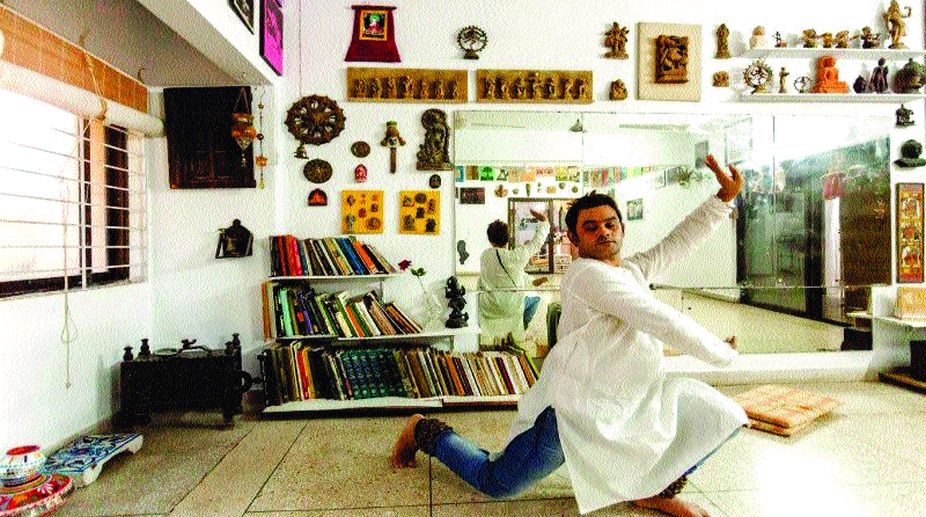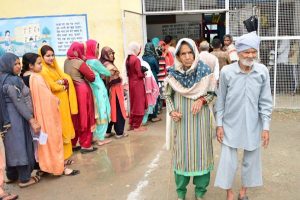What is it like for professional and amateur dancers in such a conservative, condescending society? Four such performers share an insight into their daily experiences and what it’s like to follow their passion in a society where dance is a cultural taboo.
It’s been a long day for Rabia*. The 43-year-old mother of four young boys, a busy husband and a joint household to look after, Rabia comes with a time-stamp on her shoulders. Naturally, her phone barely stops ringing. Yet, Rabia remains focused on her footwork as she synchronises the tap of her feet with other students during a Kathak dance lesson.
“It’s easy to feel useless, isolated or unproductive at home in your 40s. Weight loss is just an excuse… I need an escape from my humdrum life,” says Rabia about learning Kathak in the later years of her life.
“Once you have children and start raising them you don’t focus on things you want to do for yourself – you eventually lose confidence in your potential to do something beyond house chores,” she laments. “Dance gave me an awareness in my ability to achieve something independently.”
Recalling her two-year-long association with classical dancing, she is stirred with emotions when she shares her experiences with women of her age, particularly housewives. “I used to bicker with my husband about not giving me enough time and would take out that frustration on my children and in-laws. Dance helped me grow as a better person internally and physically – I am a happier person now!”
But just like other good things in life, Rabia’s happiness doesn’t last long. “Although I come from an elite, educated background, my family is intolerant of classical dancing,’’ she reveals. “My mother and brother ‘unfriended’ me on Facebook, and my sister told me I was a bad influence on her daughter. There was no one I could share my performances with.”
Recollecting countless instances of being socially ostracised due to her association with kathak, Rabia confides that she has lost several friends and has been asked to leave her committee (savings) group. “These are mothers who boast about their children participating in plays on Greek and Roman literature, but when it comes to Indian mythology it’s unacceptable,” says Rabia with regret.
Unsurprisingly, Rabia is reluctant to share pictures of her performances on social media and public mediums. “I am hopeful I will eventually reach a point where I can fearlessly give dance classes to housewives even if I have to behind closed doors,” she maintains, stressing the significance of kathak in her life. Interrupted by a phone call from her youngest son, she begins to untie the ‘ghungroo’ from her ankle. “Change is always uncomfortable, but worth a try,” she smiles.
There is low attendance in class today. A 14-year-old girl is humming a popular Sindhi folk tune as she practices one of the basic Jhoomar steps taught to her by the tutor, Babar. Babar has been teaching folk and classical dance at the Convent of Jesus and Mary in Karachi for almost nine years now.
“People think there are only four folk dances in Pakistani culture. They’d be surprised to see that the list of folk dances extends beyond Punjabi Bhangra, Pushto Khattak, Sindhi Jhoomar and Balochi Leva,” he shares. He summons one of his students to elaborate on the list; Peacock dance, fisher folk, Kailash, Balti and Luddi are among the many kinds.
“Acceptance to dance is another thing; our society must first understand what dance really is,” asserts Babar, talking about the challenges he faces as a dance instructor in a culturally-restricted environment.
“There is something repulsive about ghungroo. Parents are very accepting of dance as part of the curriculum here but when it comes to wearing ghungroo for a performance, resistance is inevitable,” he laughs.
Belonging to a strictly religious and conservative family, Babar has travelled a difficult road as a dancer. “I used to walk on foot from Nazimabad to Malir to take dance classes as I couldn’t afford transport fare on a daily basis. There came a time I didn’t have enough money to pay for the classes either,” he recalls. Resented and mocked by members of the family, Babar had no one he could seek support from.
After years of rejection and denunciation from the family, Babar finally convinced them to attend a performance. “That day changed everything for me. When they saw for themselves that there was nothing indecent in traditional dancing and in fact, served as a means to deliver a social message in the form of movement, my parents finally understood what the quest was all about.” Regretting the lack of recognition and training in the country, he questions how dance poses a threat to the society. “Acting and theatre, singing and music are celebrated but when it comes to learning and teaching dance, the art form becomes uncultured,” he reasserts.
“None can be a better actor than a dancer, who speaks to you without words,” Babar iterates rhythmically as the sound of a Pushto track playing in one of the classrooms hits the courtyard.
The Bharatnatyam dance class has been dismissed but the sound of the feet tapping hasn’t stopped. An 18-year-old girl dressed in white, soaked in sweat and short of breath is still dancing in the training room.
It’s been 12 years since Leila started training in classical arts but she claims there is still a long way to go for her to consider herself a professional.
“For a six-year-old, classical dance was very strenuous and uninviting. But as the years passed, I eventually fell in love with what I was doing, and now it literally defines me,” Leila tells me.
Currently studying at the Karachi Grammar School, Leila reveals that dance classes are given at the younger level of the school but it is difficult to maintain the same for higher standards given the level of interest in our society at large in dance. “Dance is the kind of a thing which if you give it the space to grow, you’d be surprised to know how many people would be interested in,” she emphasises.
“It’s sad people don’t realise that behind the so-called ‘undignified’ dance form there’s thousands of years of history, stories and culture being passed on which will be lost if we don’t preserve it,” fears Leila.
Referring to the recent hype about the alleged ban on dance training in schools by the Sindh government, Leila feels there is a genuine need to shape popular discourse towards significance of the arts.
“The public narrative in Pakistan is generally conducive to people from the arts, specifically dance. The hoopla about dance being unreligous and immodest deters people from performing and being open about their liking for the art form,” she says. Leila aims to fight for the protection and preservation of arts as she grows up.
Among the very few dance trainers in the city, Amjad has been devoted to teaching the basics of dance to primary level students for the last 17 years.
Serving as the tutor for the movement class at AMI School, he believes dance, above all, is about physical fitness. “Footwork is very good for foot muscles, coordination and balance. Stretching your arms and flexing legs maintains body shape and keeps the brain alert,” he points out. Ironically, even in a class of four-year-olds dance continues to face criticism, he laughs. “Dance is not vocational. It is something we only do at weddings,” Amjad says, quoting a student. He highlights several prejudices this art form is victim to: classical dance is synonymous with ‘Hindu dance’ and ‘mujra’; dance is for girls, and boys who dance are ‘unmanly’; it derails one from religion and ‘corrupts’ young minds.
“There is no respect for male dancers. I gave up performing in public as there was no appreciation of my skill,” he deplores, adding that he eventually diverted to teaching to utilise years of his education in dance. Amjad hopes seeing one of his students follow his footsteps someday. But he also hopes that by that time, his student will not face the same prejudice he encountered.
(*Name has been changed)
dawn/ann











